Procedural generation feels like the games industry’s white whale. It’s always touted as the ultimate replayability mechanic, giving you almost limitless possibilities to explore for as long as you might wish to. The reality is always far from that, the limitation coming from the fact that whilst there’s an impossible number of combinations to exhaustively test they’re only made up of a handful of variables, making those countless iterations all feel pretty similar. There are demonstrations of it working well of course, but many have learnt the lesson to not make it a core part of the game experience. That is except for Gunfire Games who, seemingly going all in on procedural generation for their first Remnant game, have upped the ante again with its sequel. The result is actually quite something, managing to vastly improve the game and create an experience that truly manages to stand on its own in many regards.
PLOT SPOILERS FOR REMNANT: FROM THE ASHES BELOW
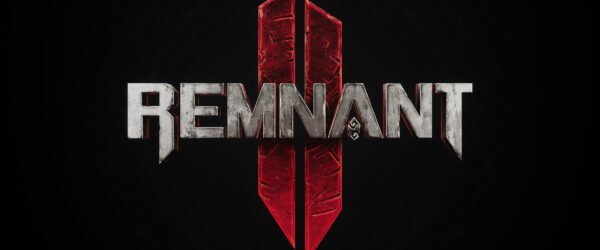
You are one of the many who still live on Earth, a planet that was ravaged by the root. Thanks to the actions of the Hero though the root has been pushed back from Earth although the last vestiges of its forces still roam our world. You’re making your way to a settlement where you hope sanctuary among the ruins and, hopefully, a cure for your friend who’s long been plagued by an affliction called root rot. On the way there though you encounter a force of root, only to be saved by Clementine who wields powers you’ve never seen before. Taking you to their settlement it quickly becomes clear that this place is a gateway to all sorts of strange things that beggar belief.
Remnant 2 continues the soulslike tradition of having graphics that are a half step behind the current norm. This is more than made up for with the level of detail that’s crammed into the environments however, something which is made all the more impressive by the fact that all levels are procedurally generated. You can pick out some recurring elements and weird dead ends that give it away, but the developers have done a good job of making the levels stitch together pretty well overall. The game is definitely at its best though when you’re in its many large, open environments as things feel a little less polished when you’re up close and personal to them. Performance is good too, even in boss fights where there’s particles and enemies galore I rarely noticed a dip in frame rate below what I’d see as acceptable.
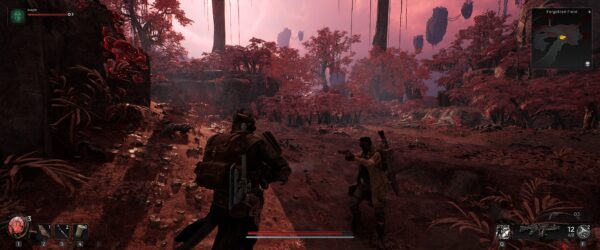
It was easy to classify the original Remnant as just “Dark Souls with guns” but Remnant 2 is something well beyond that. The game now includes a deep archetype system, allowing you to choose from a range of different classes that all have differing abilities and traits which will influence the combat experience. You can have a primary and a secondary class, along with a whole host of traits which provide you with a large canvas to build on. Couple that with your weapon and armour choices and you have a game that’s got a build system as deep as any other souls game I’ve played, one that has numerous different viable styles to explore. This then plays directly into the game’s main claim to fame: procedural generation in both the level design and narrative. This means that different playthroughs will have access to different narrative arcs as well as potentially different encounters, loot and progression options. To be sure it’s not all up to a roll of the dice, there are ways to influence the system to get what you’re looking for, but it is certainly the best implementation of this kind of system I’ve seen to date.
Like many souls games the initial stages are defined by your lack of choice. You’ll only have a couple weapons, your chosen class and a handful of armour to switch around in order to adjust to the encounters that you’re facing. This means the game’s opening acts feel like a real slog as you use the only hammer you have to bash all the nails that you come across. The game starts to open up after its first few hours however, both in terms of the kit you have available to you but also the mechanics you can leverage to start crafting a more ideal build that suits your play style.
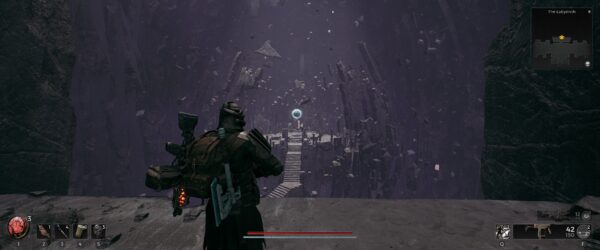
This is all a long winded way of saying that the class I decided to go with initially, the Challenger, is probably the least ideal one to start off with. To be sure the game encourages you to use melee whenever possible, and it can be quite effective too, but you’ll quickly find out that being in close quarters combat is less than ideal for a number of reasons. Worse still there are many bosses in the game that straight up preclude melee from working at all so investing heavily in it will likely see you hitting roadblocks more often than other builds will. This can be made up for easily with a co-op partner, which I had for the vast majority of my playthrough, but after a few hours I’d quickly shifted from running up and bashing skulls to a much more range focused build.
Of course there are other benefits to the Challenger class which helped out a lot though, like the ability to wear much heavier armour without being encumbered and the innate abilities which gave me an “OH SHIT” button when things got too close to me. Later on too, when I’d gotten myself the Nightfall gun, the other innate abilities paired extremely well with it allowing me to absolutely melt bosses for the last third of the game with relative ease. I ended up not getting a second class throughout my playthrough as I was wanting to max out Challenger before getting else, so it’s completely viable to single class your first playthrough without too much difficulty.
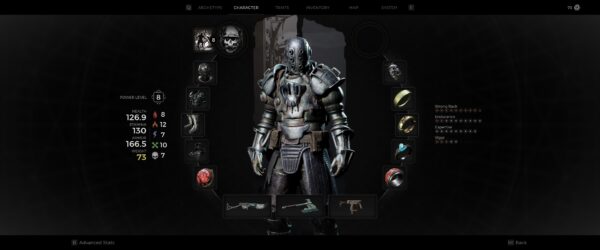
The progression systems feel well balanced, drip feeding you small incremental improvements often enough that you’re never too far away from getting the next bump up in power. This does mean that massive step changes in power don’t happen all that often though, which can be a little frustrating when you’re trying to blast through a boss or a particularly difficult encounter. The game also does a rather horrible job of explaining all the various different ways you can upgrade/modify/change all the various things you have at your disposal, irritating but unfortunately not out of the norm for this kind of game. That being said it’s really only a problem if you’re one of those purists who doesn’t like looking at wikis and whatnot, something that I have no qualms about doing.
Which could be a big sticking point for some because Remnant 2 is not shy about the fact that it’s laden with all sorts of secrets, some of which were explicitly made so hard to find that they made them specifically only for data miners to uncover. In a couple of the times I was playing with my mate there were a bunch of things we had to physically note down, come back to, consult varying different wikis for just to make sure that we were A) actually playing the intended route and B) not chasing our tails when we tried to find some of the secrets. To be sure it’s something that’ll reward those who love exploring but it could definitely end up feeling like a chore to others.
PLOT-ISH? SPOILERS BELOW…I DUNNO ITS WEIRD
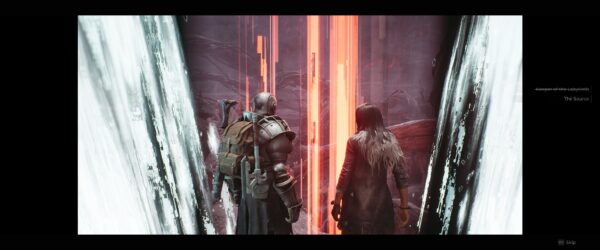
So the way the narrative will play out, overall, is definitely fixed. There’s an overarching plot and fixed story elements that you’ll encounter that are needed to progress the game through to the end. In between that though are numerous different vignettes, all of which reveal different parts of the worlds that you’re travelling to. Indeed those core story elements can, past a certain point, be 100% ignored for a good long while, something my friend discovered when he hadn’t actually gone to the Inner Sanctum of the labyrinth and was thoroughly confused about me talking about a giant eyeball. This does lead to some fun discussion about what bits of which story you managed to see in each of the particular biomes, although it would be incredibly confusing if you didn’t know that the narrative was constructed that way (say, for example, if you weren’t reading wikis).
At least this time around I feel that the narrative was a lot more approachable than it was before, the main story beats coming with much more predictability and it all tying together a lot more cleanly. This is due in part to the game engaging in more direct exposition than its predecessors did, something that isn’t exactly true to the souls genre but something I definitely appreciated. They do lose some points for loudly inferring that there’s another sequel to be had, something which they probably didn’t need to do.
PLOT SPOILERS OVER
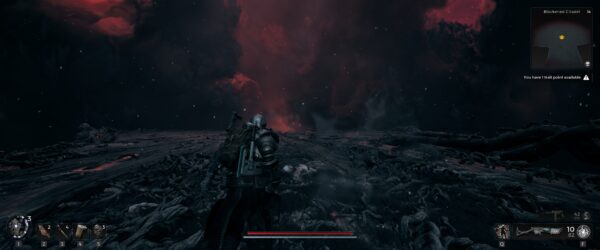
Remnant 2 does what every sequel aims to do: take what was good about the original and improve upon in it leaps and bounds. The archetype system, along with the innumerable loot options and other upgrade paths, make for an endless amount of min/maxing of builds that’ll keep players chasing higher numbers for years to come. The procedural generation from both a level and narrative sense is really quite incredible and goes down as the best implementation of these systems I’ve seen yet. There are some small improvements to be made, like making melee viable, but overall it’s exceptional to see the progress that the devs have made on this game over the years. I don’t think I’m alone in saying that I didn’t expect Remnant 2 to be as good as it is and I’m actually now looking forward to more from the series.
Rating: 9.0/10
Remnant 2 is available on PC, PlayStation 5 and Xbox Series X/S right now for $73.50. Game was played on the PC with a total 12.6 hours played and 40% of the achievements unlocked.



